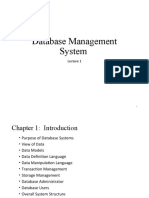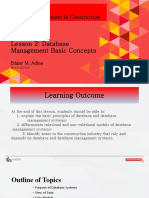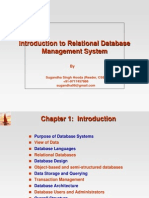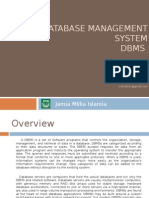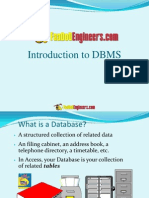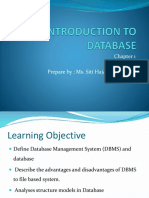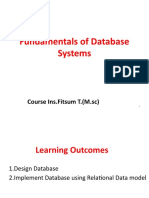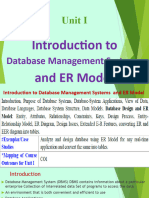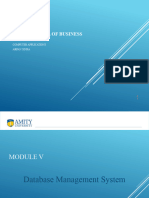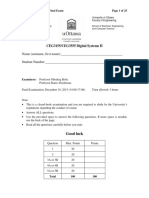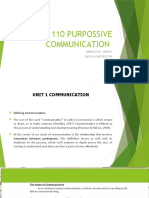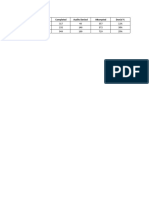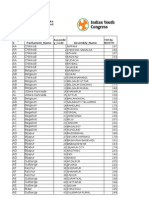0% found this document useful (0 votes)
8 views50 pagesModule - 1 - Part I
The document provides an overview of database systems, including their architecture, data modeling, and the differences between database systems and file systems. It discusses the Entity-Relationship model and the relational model, as well as the roles of database administrators and users. Additionally, it covers transaction management, storage management, and query processing within database management systems.
Uploaded by
pikluCopyright
© © All Rights Reserved
We take content rights seriously. If you suspect this is your content, claim it here.
Available Formats
Download as PPTX, PDF, TXT or read online on Scribd
0% found this document useful (0 votes)
8 views50 pagesModule - 1 - Part I
The document provides an overview of database systems, including their architecture, data modeling, and the differences between database systems and file systems. It discusses the Entity-Relationship model and the relational model, as well as the roles of database administrators and users. Additionally, it covers transaction management, storage management, and query processing within database management systems.
Uploaded by
pikluCopyright
© © All Rights Reserved
We take content rights seriously. If you suspect this is your content, claim it here.
Available Formats
Download as PPTX, PDF, TXT or read online on Scribd
/ 50
